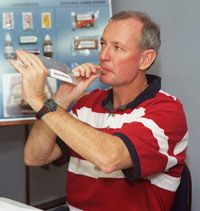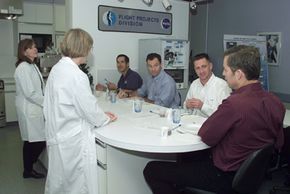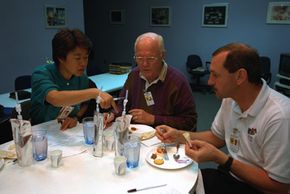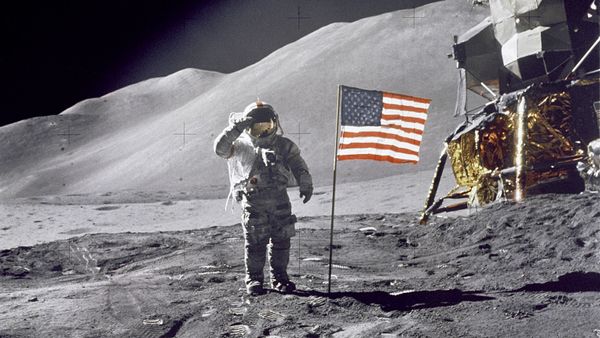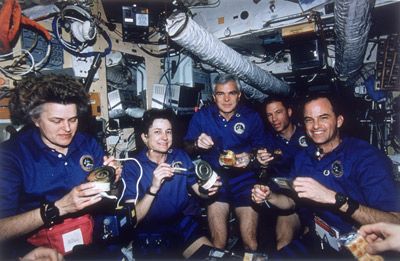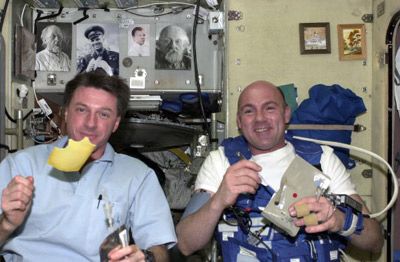Inside Building 17 on the Johnson Space Center campus, you'll find the Space Food Systems Laboratory. The facility is made up of four laboratories: a test kitchen (which includes a preparation area and sensory testing booths), a food processing lab, a food packaging lab and an analytical lab.
Food scientists, registered dietitians, packaging engineers, food systems engineers and technicians blend their knowledge of chemistry, engineering, biology, microbiology and nutrition to conduct experiments, plan projects and investigations, write specifications for space food products and coordinate with other teams. All work on products for the space shuttle, the International Space Station and future exploration missions.
The scale of what can be accomplished at the facility is impressive. Teams conduct physical and sensory analyses of foods, plan menus and manage food product development. Food processing techniques to keep foods stable at room temperature, such as blast freezing and freeze-drying, are tested here. Additionally, long-term storage techniques for processing foods are researched and developed, as well as ways in which to fabricate, design and test custom packaging and materials.
Teams here are always looking for ways in which to improve the eating experience for crews in space. They advance ways foods are prepared and served during space flight, evaluate prototypes and flight food preparation hardware, and experiment with ways to grow food in space and on Mars.
In its early days, though, space food products were either cubed or tubed. Foods were freeze-dried powders, bite-sized cubes and semi-liquids in toothpaste-like tubes. Manned space missions were short, and food wasn't a high priority on trips.
In August 1962, John Glenn became was the first American to eat in space (Soviet cosmonaut German Titov was the first person). But during the early 1960s, astronauts dined on highly engineered and unpalatable foods commonly referred to as "meals in a pill" that were coated with gelatin to reduce crumbling. By the mid-1960s, product development hadn't changed much, although there was a bit more variety --butterscotch pudding for dessert, anyone?
In the late 1960s, when NASA was preparing to send the first man to the moon, NASA scientists were improving processing and packaging for space foods. During the Apollo missions, scientists provided foods that were rehydratable with hot water. Between 1968 and 1972, as missions became longer and spacecrafts became more advanced, NASA's food scientists began using aluminum cans for storage, developed more flexible packages and discovered ways to process food to extend its nutritional quality and shelf life. They also unveiled the "spoon bowl." (Don't let the catchy name fool you: It's a plastic container that can be opened and its contents eaten with a spoon.) During the 1970s, food scientists were able to offer 72 different items of pre-cooked and rehydratable foods for the first space station, Skylab, where developments allowed astronauts the opportunity to eat together around a table and use conventional utensils (knife, fork, spoon -- and scissors for cutting open plastic containers and sealed packages).
From the 1980s on, space food technology has made enormous advances in conjunction with shuttle missions and the International Space Station. Preprocessed and individually packaged foods were introduced, as were some fresh foods. Today, menus are full of a variety of foods that taste similar to foods we eat on Earth. (They even have condiments, including Tabasco, which went into orbit during the 1990s.)
Next, let's learn about the types of space food, where space food comes from and how menus are planned.
